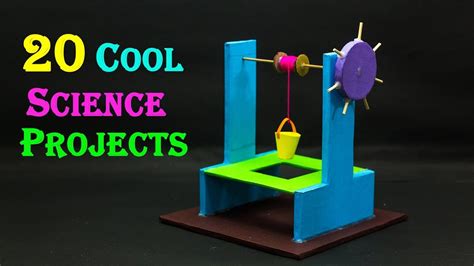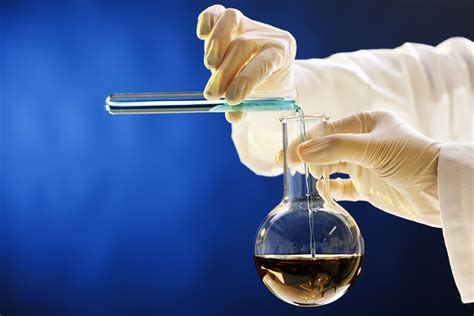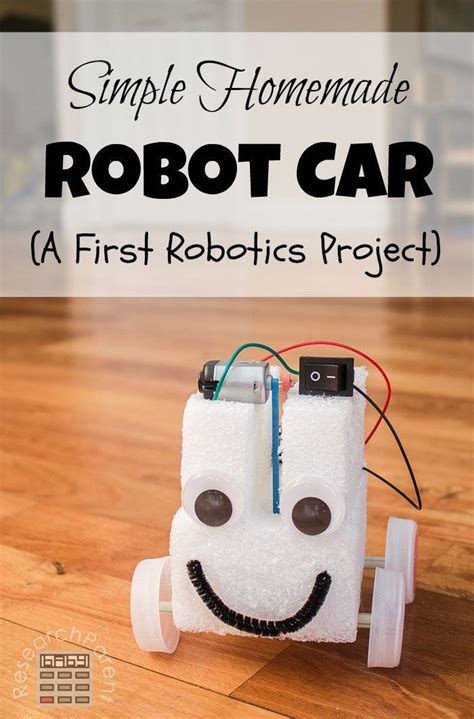Breaking News


Popular News


Discover exciting science project ideas for high school students, including chemical reactions, renewable energy, robotics, genetics, and space exploration activities.Are you a high school student looking for an exciting science project to showcase your passion for the subject? Look no further! In this blog post, we have compiled a list of fascinating science project ideas specifically designed for high school students. Whether you’re interested in chemical reactions, renewable energy, robotics, genetics, or astronomy, there’s something for everyone. These project ideas will not only challenge your scientific knowledge but also ignite your curiosity and creativity. From conducting chemical reaction experiments to delving into the intricacies of DNA investigations, there’s no limit to what you can achieve. Get ready to embark on an educational and thrilling journey as we explore the realm of science through these engaging project ideas. It’s time to unleash your scientific prowess and make an impact in the world of science!
Contents

High school is the perfect time to get hands-on with chemical reaction experiments that will not only be educational but also fun for students. One exciting experiment to try is the classic baking soda and vinegar reaction, which can be used to teach students about the chemical reaction between an acid and a base. Another interesting experiment is the iodine clock reaction, where students can observe the sudden color change that occurs when two clear solutions are mixed together, demonstrating the concept of reaction rates. These experiments can be easily conducted in a classroom setting with simple household materials, making them an accessible and engaging way for students to learn about chemical reactions.
For those looking to take their chemical reaction experiments to the next level, creating a lemon battery can be a fascinating project. By using the citric acid in a lemon as an electrolyte, students can build a simple battery and experiment with different fruits to see which ones produce the most electrical charge. This project not only teaches students about chemical reactions, but also introduces them to the concept of renewable energy sources and the potential for using natural materials to produce electricity.
Furthermore, students can explore the world of catalysis through the hydrogen peroxide and yeast reaction, which demonstrates how enzymes can speed up chemical reactions. This experiment can be used to explain the role of catalysts in chemical processes and how they can be used to increase the efficiency of various reactions. By engaging in these chemical reaction experiments, high school students can gain valuable insight into the world of chemistry and develop a deeper understanding of the principles that govern the natural world.
| Experiment | Materials |
|---|---|
| Baking Soda and Vinegar Reaction | Baking soda, vinegar, balloon |
| Iodine Clock Reaction | Potassium iodate, sodium metabisulfite, starch, water |
| Lemon Battery | Lemons, copper and zinc electrodes, multimeter |
| Hydrogen Peroxide and Yeast Reaction | Hydrogen peroxide, yeast, dish soap, food coloring |

Renewable energy is a hot topic in today’s world, and high school students can get involved in this important field with some DIY renewable energy projects. One idea is to build a small solar panel to power a phone charger or small electronics. This project introduces students to the concept of harnessing the sun’s energy and converting it into electricity. Another fun project is to build a wind turbine using simple materials like PVC pipes and a generator. Students can test their turbine in different wind conditions and see how much energy they can generate. A third project idea is to build a miniature hydroelectric generator using a small water wheel and a generator. This project teaches students about the power of moving water and how it can be used to create electricity.
For those interested in bioenergy, a DIY project could involve building a small biogas digester to produce methane gas from food waste. This project highlights the potential of turning organic waste into a valuable energy source. Another project idea is to create a small-scale biodiesel production system using vegetable oil and alcohol. This project introduces students to the concept of renewable fuels and the chemistry behind biodiesel production.
Renewable energy projects are not only educational, but they also promote sustainable living and a greener future. By engaging in these DIY projects, high school students can gain practical skills and knowledge in the field of renewable energy, and perhaps even spark an interest in pursuing a career in the growing green energy industry.

Robotics and automation activities are excellent ways for high school students to engage with STEM concepts and develop important technical skills. One exciting project idea is to build a small robotic vehicle using a microcontroller and various sensors. Students can learn about programming, circuitry, and mechanical design as they work to bring their creation to life.
Another engaging activity is to design and program a simple robotic arm. This project allows students to explore the principles of mechatronics and gain hands-on experience with servo motors and programmable controllers. They can also learn about the applications of automation in industries such as manufacturing and healthcare.
Furthermore, high school students can take on the challenge of creating an autonomous drone that can navigate a specific course. This project involves aspects of both robotics and artificial intelligence, as students must consider how their drone will interpret and respond to its environment. They can also delve into the ethical considerations surrounding the use of autonomous systems.
Overall, robotics and automation activities provide an engaging and practical way for high school students to apply their engineering and programming knowledge. These projects can inspire a passion for innovation and problem-solving, laying the foundation for future careers in fields such as robotics, automation, and mechanical engineering.

When it comes to high school science projects, Genetics and DNA Investigations can be both challenging and fascinating. These projects allow students to explore the world of DNA, genes, and heredity in a hands-on and practical way. One interesting project idea is to create a DNA model using household materials such as pipe cleaners and beads. This project not only helps students understand the structure of DNA but also teaches them about the different components of a DNA molecule.
Another exciting project for high school students is to extract DNA from various fruits or vegetables. By following the steps of DNA extraction, students can witness firsthand the long strands of DNA that make up the genetic code of living organisms. This project can be a great way to introduce students to the concept of genetic variation and the role of DNA in inheritance.
Furthermore, high school students can also conduct experiments to explore inherited traits and genetic disorders. By creating Punnett squares and analyzing family pedigrees, students can gain a deeper understanding of how genetic traits are passed down from one generation to the next. This type of project not only educates students about genetic inheritance but also allows them to explore the implications of genetic disorders on individuals and families.
In conclusion, Genetics and DNA Investigations provide a wealth of opportunities for high school students to engage in hands-on and interactive science projects. These projects not only enhance students’ understanding of genetics and heredity but also inspire them to pursue further studies in the field of genetics and biotechnology.

Astronomy and space exploration are fascinating areas of science that can capture the imagination of high school students. Engaging in hands-on projects related to these topics can help students develop a deeper understanding of the cosmos and the technology and methods used to explore it.
One exciting project idea for high school students is building a scale model of the solar system. This can be done using li tags to list the planets and their distances from the sun, as well as a table to organize and display the information. Students can immerse themselves in the vastness of space as they construct the model, gaining a better grasp of the relative sizes and distances of the planets.
Another challenging project is to design and launch a model rocket. This activity not only requires the application of principles of physics and engineering, but also provides a hands-on demonstration of the forces and dynamics involved in space travel. High school students can learn about the laws of motion and the science behind propulsion systems as they work on their rocket design and launch it into the sky.
Finally, students can undertake a project on studying and tracking celestial phenomena such as meteor showers, eclipses, or the motion of planets and stars. This can involve data collection, observation, and analysis, giving students the opportunity to engage in scientific inquiry and astronomical research.

What are some examples of fascinating science project ideas for high school students?
Some examples include creating a homemade volcano, conducting a plant growth experiment, or building a solar-powered oven.
How can high school students conduct a plant growth experiment for a science project?
They can use different variables such as light, water, and soil to see how they affect the growth of plants, and record their observations over a period of time.
What is the benefit of high school students doing a science project?
Science projects help students develop critical thinking, problem-solving, and experimental skills, and foster a love for science and learning.
Are there any science project ideas that incorporate technology for high school students?
Yes, students can create a simple coding project, build a robot, or design an app to solve a real-world problem.
How can high school students ensure their science project is safe and ethical?
They should always follow safety guidelines, obtain necessary permissions for any experiments involving animals or human participants, and ensure their project does not harm the environment.
Where can high school students find resources and support for their science project ideas?
They can seek help from teachers, use online resources, visit the library, or collaborate with professionals in the field of science and technology.
What are some key factors to consider when selecting a science project idea for high school?
Consider the student’s interests, availability of resources, level of challenge, relevance to real-world issues, and potential for making a positive impact.